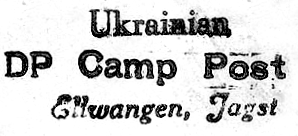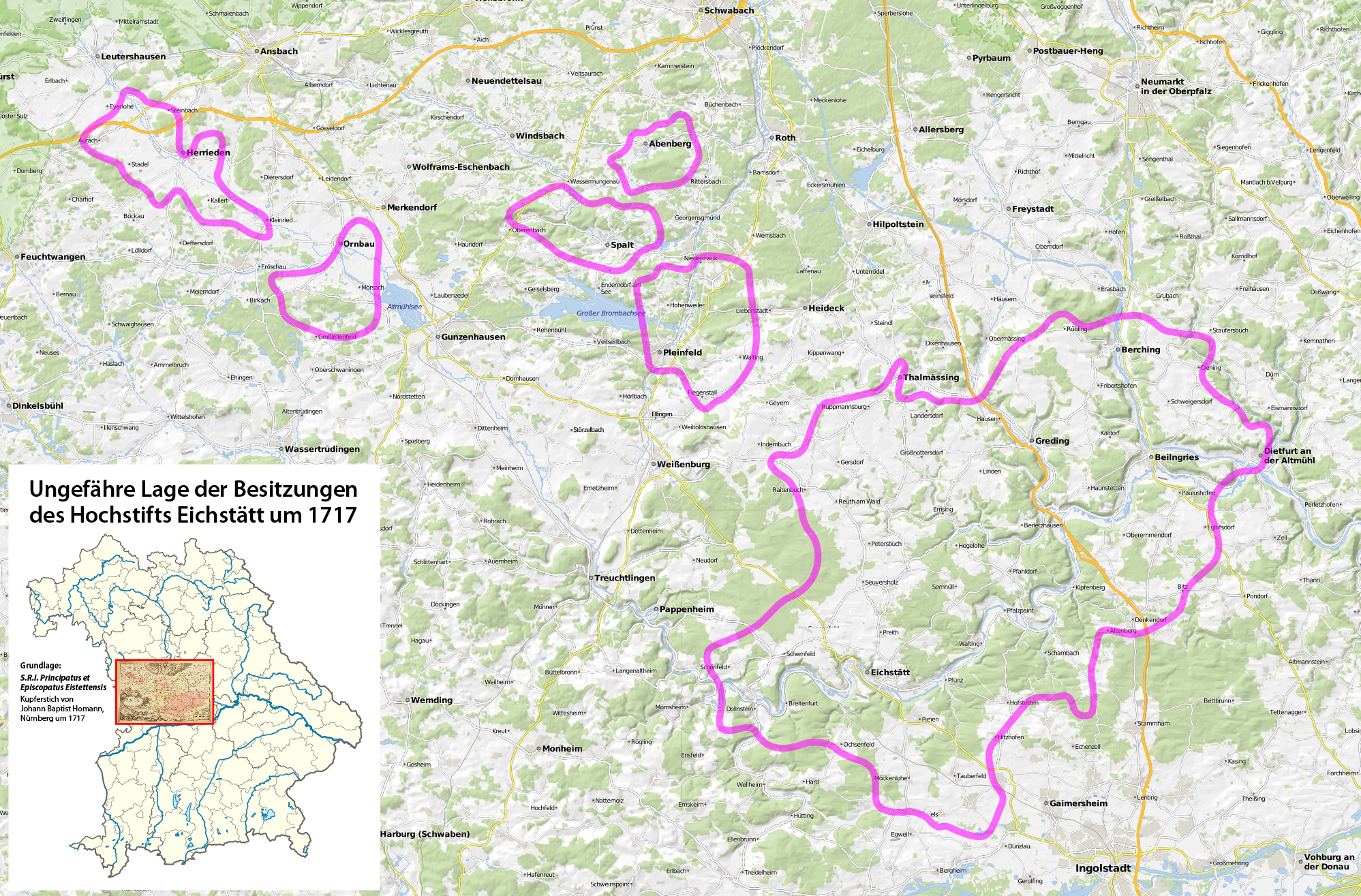|
Ellwangen Witch Trials
The Ellwangen witch trial took place in the Catholic Prince Bishopric of Ellwangen between 1611 and 1618. It was preceded by a first witch trial in 1588. The first witch trial led to the death of 17/20 people, and the second led to the death of 430, making the number of deaths to about 450 in total. History The witch trial occurred in a religiously unstable area and was instigated by the initiative of the authorities. In April 1611, a woman was arrested accused of having blasphemed the communion. Under torture, she was pressed to admit witch craft and point out her accomplices. The alleged accomplices were arrested and, in turn, forced to confess and point out their accomplices. The prince Bishop formed a witch commission and changed the law, which made it easier to handle witch trials. By 1618, the witch trial had led to a demographic imbalance, an instable economy and a lack of trust on the legal system. An example of interrogation and sentencing records, 82 pages, can be found i ... [...More Info...] [...Related Items...] OR: [Wikipedia] [Google] [Baidu] |
Ellwangen
Ellwangen an der Jagst, officially Ellwangen (Jagst), in common use simply Ellwangen () is a town in the district of Ostalbkreis in the east of Baden-Württemberg in Germany. It is situated about north of Aalen. Ellwangen has 25,000 inhabitants. Geography Ellwangen is situated in the valley of the river Jagst, between the foothills of the Swabian Alb and Virngrund (ancient Virgundia) forest, the latter being part of the Swabian-Franconian Forest. The Jagst runs through Ellwangen from south to north. History The town developed in the 7th century as an Alemannic settlement in the Virgunna forest next to the Franconian-Swabian border. In 764 the Frankish noble Hariolf, Bishop of Langres, founded a Benedictine monastery, Ellwangen Abbey, on a hill next to the settlement. The monastery was mentioned in a document of Louis the Pious as ''Elehenuuwang'' in 814. It became a ''Reichsabtei'' in 817. From 870 to 873 the Byzantine Greek "Apostle of the Slavs" Saint Methodius was imprison ... [...More Info...] [...Related Items...] OR: [Wikipedia] [Google] [Baidu] |
Bamberg Witch Trials
The Bamberg witch trials of 1627–1632, which took place in the self governing Catholic Prince-Bishopric of Bamberg in the Holy Roman Empire in present-day Germany, is one of the biggest mass trials and mass executions ever seen in Europe, and one of the biggest witch trials in history. Over an extended period around 1,000 people were executed after being accused of witchcraft in Bamberg, about 900 of whom were executed in 1626–1632. People of all ages, sexes and classes, all of whom were burned at the stake, sometimes after having been beheaded, sometimes alive. The witch trials took place during the ongoing religious Thirty Years War between Protestants and Catholics, in an area on the religious border between Catholic and Protestant territories, and were conducted by a Catholic Prince Bishop intent on introducing the Counter-Reformation in his territory. The Bamberg witch trials is among the largest Witch trials in the Early Modern period: it was one of the four largest w ... [...More Info...] [...Related Items...] OR: [Wikipedia] [Google] [Baidu] |
Würzburg Witch Trial
Würzburg (; Main-Franconian: ) is a List of cities and towns in Germany, city in the region of Franconia in the north of the Germany, German state of Bavaria. Würzburg is the administrative seat of the ''Regierungsbezirk'' Lower Franconia. It spans the banks of the Main (river), Main River. Würzburg is situated approximately east-southeast of Frankfurt, Frankfurt am Main and approximately west-northwest of Nuremberg (). The population (as of 2019) is approximately 130,000 residents. The administration of the ''Landkreis Würzburg'' (Würzburg (district), district of Würzburg) is also located in the town. The regional dialect is East Franconian German, East Franconian. History Early and medieval history A Bronze Age Europe, Bronze Age (Urnfield culture) refuge castle, the Celtic Segodunum,Koch, John T. (2020)CELTO-GERMANIC Later Prehistory and Post-Proto-Indo-European vocabulary in the North and West p. 131 and later a Roman Empire, Roman fort, stood on the hill known ... [...More Info...] [...Related Items...] OR: [Wikipedia] [Google] [Baidu] |
Eichstätt Witch Trials
The Eichstätt witch trials was a series of witch trials that took place in the Prince-Bishopric of Eichstätt (German: Hochstift Eichstätt, Fürtsbistum Eichstätt), Bavaria, Germany, between 1532 and 1723. They resulted in the execution of at least 224 people (197 women and 27 men), and were among the biggest witch trials in Germany. The trials were mainly conducted under the approval of Prince Bishop Johann Christoph von Westerstetten between 1613 and 1630. The last known execution in Eichstätt was conducted in 1723. Persecution phases Early phase before 1562 The first known executions for witchcraft in Eichstätt were carried out in 1532 when two women were sentenced to death. The same happened to another woman in 1535. Margreth Auerhamerin was expelled from the bishopric in 1551 as she did not confess any witchcraft which she was accused of. First phase 1562–1590 The first larger persecution happened under the authority of Prince-Bishop Martin von Schaumberg ( ... [...More Info...] [...Related Items...] OR: [Wikipedia] [Google] [Baidu] |
Internet Archive
The Internet Archive is an American digital library with the stated mission of "universal access to all knowledge". It provides free public access to collections of digitized materials, including websites, software applications/games, music, movies/videos, moving images, and millions of books. In addition to its archiving function, the Archive is an activist organization, advocating a free and open Internet. , the Internet Archive holds over 35 million books and texts, 8.5 million movies, videos and TV shows, 894 thousand software programs, 14 million audio files, 4.4 million images, 2.4 million TV clips, 241 thousand concerts, and over 734 billion web pages in the Wayback Machine. The Internet Archive allows the public to upload and download digital material to its data cluster, but the bulk of its data is collected automatically by its web crawlers, which work to preserve as much of the public web as possible. Its web archiving, web archive, the Wayback Machine, contains hu ... [...More Info...] [...Related Items...] OR: [Wikipedia] [Google] [Baidu] |
Witch Trials In Germany
The witch trials in the Holy Roman Empire, composed of the areas of present-day Germany, Switzerland and Austria, were the most extensive in Europe and in the world, both to the extent of the witch trials as such as well as to the number of executions. The witchcraft persecutions differed widely between the regions, and was most intense in the territories of the Catholic Prince Bishops in Southwestern Germany. The witch trials of the Catholic Prince Bishops of South West Germany were arguably the biggest in the world. Witch trials did occur in Protestant Germany as well, but were fewer and less extensive in comparison with Catholic Germany. The witch trials of Catholic Austria and Protestant Switzerland were both severe. Legal situation Witchcraft was formally categorized as a crime in the Holy Roman Empire in the Constitutio Criminalis Carolina in 1532. The Holy Roman Empire consisted of a number of autonomous states, both Protestant and Catholic who all had their own laws an ... [...More Info...] [...Related Items...] OR: [Wikipedia] [Google] [Baidu] |
1611 In Law
Events January–June * February 27 – Sunspots are observed by telescope, by Frisian astronomers Johannes Fabricius and David Fabricius. Johannes publishes the results of these observations, in ''De Maculis in Sole observatis'' in Wittenberg, later this year. Such early discoveries are overlooked, however, and the first sighting is claimed a few months later, by Galileo Galilei and Christoph Scheiner. * March 4 – George Abbot is enthroned as Archbishop of Canterbury. * March 9 – Battle of Segaba in Begemder: Yemana Kristos, brother of Emperor of Ethiopia Susenyos I, ends the rebellion of Melka Sedeq. * April 4 – Denmark-Norway declares war on Sweden, then captures Kalmar. * April 28 – The ''Colegio de Nuestra Señora del Santísimo Rosario'' is established in Manila, the Philippines (later renamed Colegio de Santo Tomas, now known as the University of Santo Tomas). * May 2 – The Authorized King James Version of the Bible is pub ... [...More Info...] [...Related Items...] OR: [Wikipedia] [Google] [Baidu] |
1618 In Law
Events January–June * February 26 – Osman II deposes his uncle Mustafa I as Ottoman sultan (until 1622). * March 8 – Johannes Kepler discovers the third law of planetary motion (after some initial calculations, he soon rejects the idea, but on May 15 confirms the discovery). * April 21 – Spanish-born Jesuit missionary Pedro Páez becomes (probably) the first European to see and describe the source of the Blue Nile in Ethiopia. * May 23 – The Second Defenestration of Prague – Protestant noblemen hold a mock trial, and throw two direct representatives of Ferdinand II of Germany (Imperial Governors) and their scribe out of a window into a pile of manure, exacerbating a low-key rebellion into the Bohemian Revolt (1618–1621), precipitating the Thirty Years' War into armed conflict, and further polarizing Europe on religious grounds. * June 14 – Joris Veseler prints the first Dutch newspaper '' Courante uyt Italien, Duytslandt, &c.' ... [...More Info...] [...Related Items...] OR: [Wikipedia] [Google] [Baidu] |
1611 In The Holy Roman Empire
Events January–June * February 27 – Sunspots are observed by telescope, by Frisian astronomers Johannes Fabricius and David Fabricius. Johannes publishes the results of these observations, in ''De Maculis in Sole observatis'' in Wittenberg, later this year. Such early discoveries are overlooked, however, and the first sighting is claimed a few months later, by Galileo Galilei and Christoph Scheiner. * March 4 – George Abbot is enthroned as Archbishop of Canterbury. * March 9 – Battle of Segaba in Begemder: Yemana Kristos, brother of Emperor of Ethiopia Susenyos I, ends the rebellion of Melka Sedeq. * April 4 – Denmark-Norway declares war on Sweden, then captures Kalmar. * April 28 – The ''Colegio de Nuestra Señora del Santísimo Rosario'' is established in Manila, the Philippines (later renamed Colegio de Santo Tomas, now known as the University of Santo Tomas). * May 2 – The Authorized King James Version of the Bibl ... [...More Info...] [...Related Items...] OR: [Wikipedia] [Google] [Baidu] |
1618 In The Holy Roman Empire
Events January–June * February 26 – Osman II deposes his uncle Mustafa I as Ottoman sultan (until 1622). * March 8 – Johannes Kepler discovers the third law of planetary motion (after some initial calculations, he soon rejects the idea, but on May 15 confirms the discovery). * April 21 – Spanish-born Jesuit missionary Pedro Páez becomes (probably) the first European to see and describe the source of the Blue Nile in Ethiopia. * May 23 – The Second Defenestration of Prague – Protestant noblemen hold a mock trial, and throw two direct representatives of Ferdinand II of Germany (Imperial Governors) and their scribe out of a window into a pile of manure, exacerbating a low-key rebellion into the Bohemian Revolt (1618–1621), precipitating the Thirty Years' War into armed conflict, and further polarizing Europe on religious grounds. * June 14 – Joris Veseler prints the first Dutch newspaper '' Courante uyt Italien, Duytsland ... [...More Info...] [...Related Items...] OR: [Wikipedia] [Google] [Baidu] |







